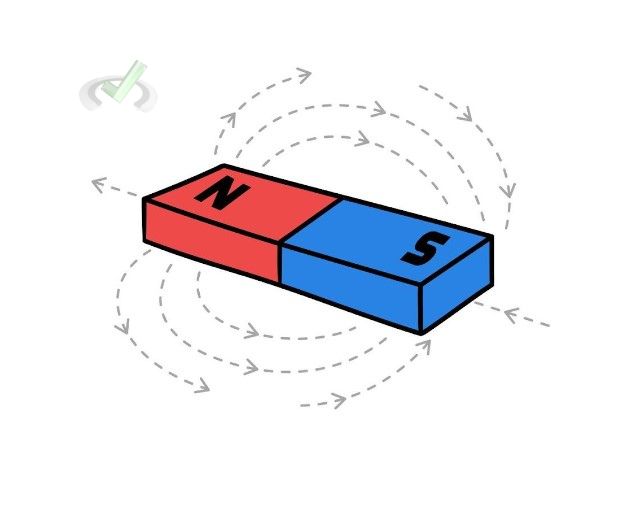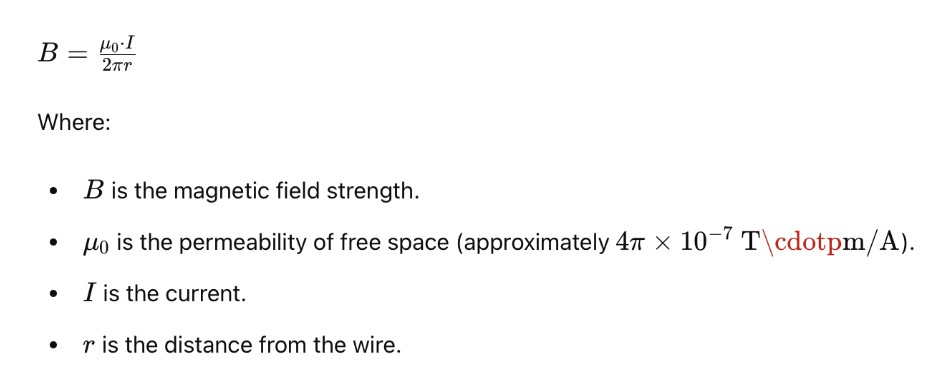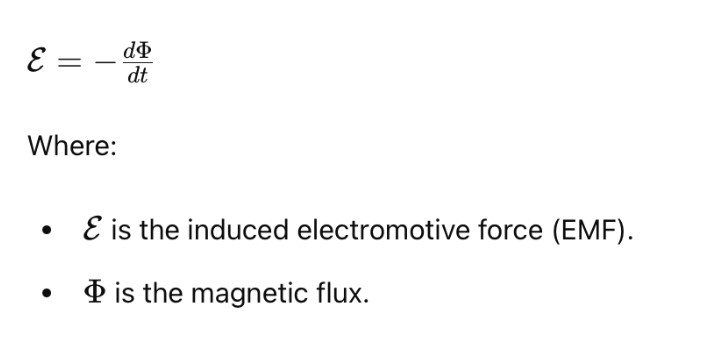Remember playing with magnets as a child? They repelled each other when you tried to push the same poles together. But opposite poles stuck together. This simple play introduced you to magnetic fields.
Magnets and their invisible forces can seem like magic, but they are essential in many aspects of our lives. From the compass that helps us find direction to the motors that power many devices, magnetic fields are all around us.
I. Introduction to Magnetic Fields
A magnetic field is an area around a magnet where magnetic forces can be felt. These forces can attract or repel other magnets and affect certain metals. Understanding magnetic fields helps us see how magnets work and how they are used in different technologies.

Magnets have two poles, north and south. When you bring one magnet's north pole close to another's south pole, they attract. But they repel if you get two north poles or two south poles close. This happens because of the magnetic field around the magnets.
II. Properties of Magnetic Fields
Magnetic fields have several important properties that define their work and impact their surroundings.
Magnetic Field Strength
The strength of a magnetic field is measured in units called teslas (T) or gauss (G). It shows how strong the magnetic force is at a certain point in the field.
For example, a refrigerator magnet has a field strength of about 0.001 T. Meanwhile, an MRI machine has a field strength of about 1.5 T or higher.
Direction of Magnetic Fields

The direction of a magnetic field is the direction a magnet's north pole would point if placed in the field. Magnetic fields run from the north pole to the south pole of a magnet.
For instance, the Earth's magnetic field points from the magnetic south pole to the magnetic north pole. Note that the Earth's magnetic north pole is near the geographic south pole.
Magnetic Field Lines
Magnetic field lines are visual tools that help us understand the direction and strength of magnetic fields. They start at the north pole and end at the south pole.
The closer these lines are, the stronger the magnetic field. Magnetic field lines never cross each other and can help visualize the field around magnets.
Uniform Magnetic Fields
Sometimes, magnetic fields are uniform, meaning they have the same strength and direction everywhere. This is seen between two parallel magnetic poles. The equation for a uniform magnetic field around a long straight wire is:

Uniform magnetic fields are used in scientific experiments and devices like MRI machines.
III. Behavior of Magnetic Fields
Magnetic fields interact with materials in specific ways. Several principles help explain these interactions.
Lorentz Force

The Lorentz force describes the force on a charged particle moving through a magnetic field. It is given by:

The cross product (××) means the force is perpendicular to the velocity and the magnetic field direction. This principle is crucial in understanding how electric motors and generators work.
Magnetic Flux

Magnetic flux measures the number of magnetic field lines passing through a surface. It is calculated as:

The dot product (⋅) means the angle between the magnetic field and the surface is considered. Magnetic flux helps in understanding how transformers and inductors work.
Electromagnetic Induction
Electromagnetic induction is the process of generating an electric current by changing the magnetic field. Faraday's Law of Induction states:

Lenz's Law, which is part of Faraday's Law, states that the induced EMF will always oppose the change in flux. This principle is used in many applications, such as power generation and induction cooking.
IV. Applications of Magnetic Fields
Magnetic fields are used in various fields, from electronics to medicine.
Electronics
Magnetic fields are essential in designing and operating electronic devices. Hard drives use magnetic fields in order to store data. Transformers rely on magnetic fields to transfer electrical energy between circuits.
Medical Equipment
In medicine, magnetic fields are used in MRI machines to generate detailed images of the body. Magnetic therapy treats certain conditions, such as pain and inflammation, using magnetic fields.
Environmental Science
Magnetic fields are used to study the Earth's magnetic field, which helps navigate and understand geological processes. Magnetometers measure the strength and direction of magnetic fields, which can help detect metal objects underground.
V. Connecting Magnetic Fields to Broader Scientific Concepts
Magnetic fields are fundamental to our understanding of physics. They are intricately linked with many broader scientific concepts, shedding light on phenomena across various disciplines.
Magnetic Fields and Electromagnetic Waves
Magnetic fields are crucial to electromagnetic waves, including light, radio waves, and X-rays. These waves are created by oscillating electric and magnetic fields. Understanding magnetic fields helps us understand how these waves work and how they are used in communication and medical imaging.
Magnetic Fields and Electricity
Electricity and magnetism are closely related. Moving electric charges create magnetic fields.
On the other hand, changing magnetic fields can induce electric currents. This relationship is the basis for many technologies, such as electric motors and generators.
Magnetic Fields and Quantum Mechanics
In quantum mechanics, magnetic fields affect the behavior of particles on a very small scale. For example, the magnetic moment of an electron determines how it interacts with magnetic fields. This interaction is vital in understanding atomic and molecular structures.
VI. Wrap-Up and Key Terms
Understanding magnetic fields involves several key concepts and principles. Let's review.
Key Terms
- Magnetic Field Strength: Measure of the force in the field.
- Direction of Magnetic Fields: The direction a north pole would point.
- Magnetic Field Lines: Visual representation of the field.
- Lorentz Force: Force on a moving charged particle in a magnetic field.
- Magnetic Flux: Number of magnetic field lines through a surface.
- Electromagnetic Induction: Generating electric current by changing the magnetic field.
VII. Practice Questions
Sample Practice Question 1
What is the measure of the force in a magnetic field?
A. Magnetic Flux
B. Magnetic Field Strength
C. Lorentz Force
D. Electromagnetic Induction
Ans. B
Magnetic field strength measures the force in the magnetic field.
Sample Practice Question 2
Which principle explains the force on a moving charged particle in a magnetic field?
A. Magnetic Flux
B. Magnetic Field Strength
C. Lorentz Force
D. Electromagnetic Induction
Ans. C
The Lorentz force describes the force on a moving charged particle in a magnetic field.









 To help you achieve your goal MCAT score, we take turns hosting these
To help you achieve your goal MCAT score, we take turns hosting these 





















 reviews on TrustPilot
reviews on TrustPilot